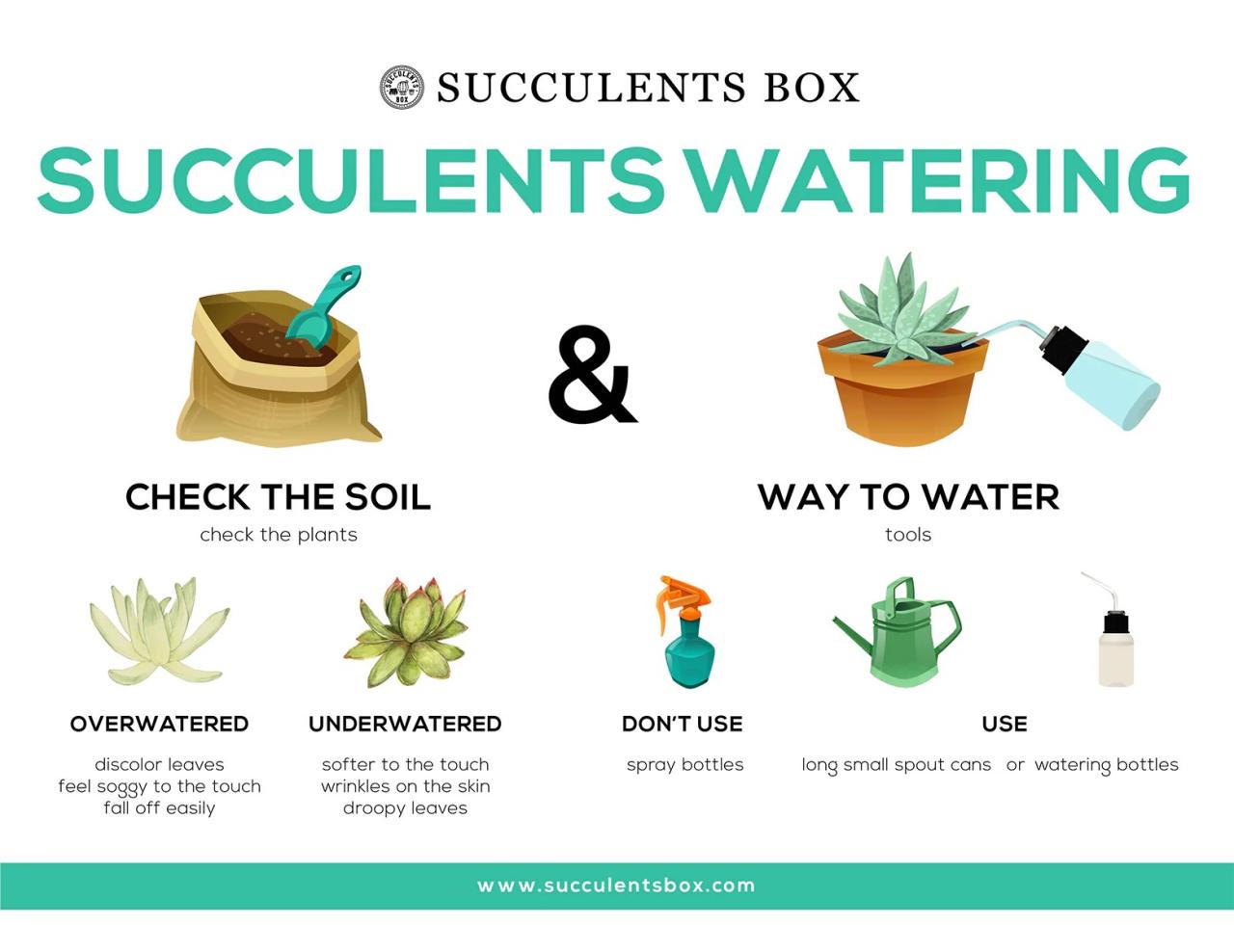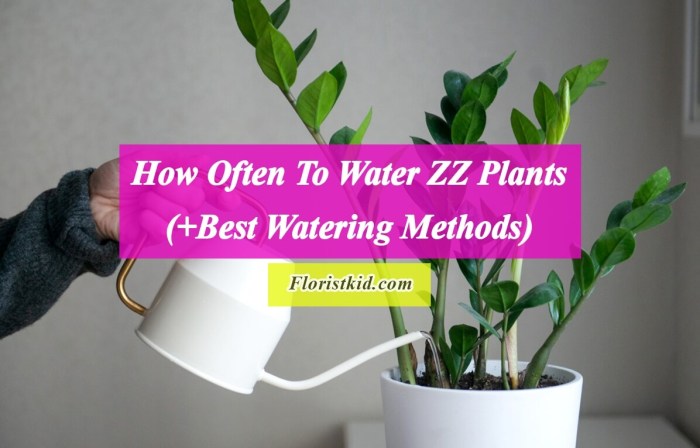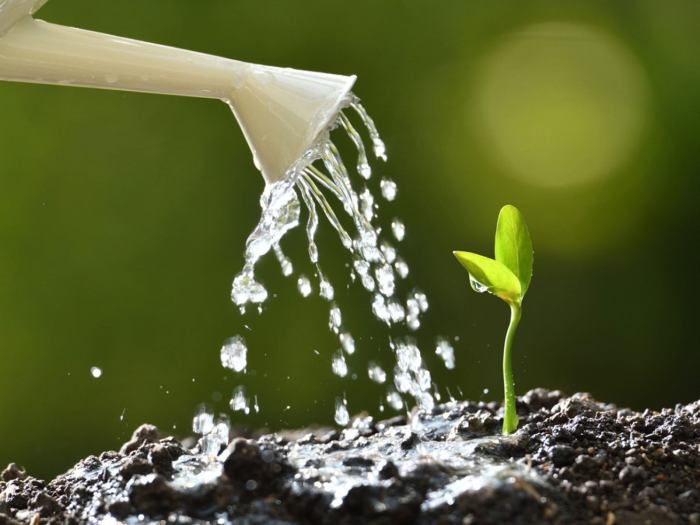How Much to Water My Plants?
Understanding Your Plants’ Water Needs: How Much To Water My Plants
How much to water my plants – Proper watering is crucial for healthy plant growth. Several factors influence how much water your plants need, understanding these is key to preventing both overwatering and underwatering.
Factors Influencing Water Requirements
Sunlight intensity, soil type, pot size, and the plant species itself all play significant roles in determining a plant’s water needs. Plants in direct sunlight will dry out faster than those in shade. Well-draining soil allows excess water to escape, preventing root rot, while dense soil retains moisture longer. Larger pots hold more water and take longer to dry, whereas smaller pots require more frequent watering.
Different plant species have varying water requirements; some thrive in consistently moist soil, while others prefer drier conditions.
Water Needs of Common Houseplants
| Plant Name | Water Frequency | Soil Moisture Preference | Signs of Overwatering/Underwatering |
|---|---|---|---|
| Snake Plant | Every 2-3 weeks | Dry | Overwatering: Yellowing leaves, mushy stems; Underwatering: Wilting leaves, crispy edges |
| ZZ Plant | Every 3-4 weeks | Very dry | Overwatering: Yellowing leaves, root rot; Underwatering: Wilting, leaf drop |
| Pothos | Once a week | Evenly moist | Overwatering: Yellowing leaves, root rot; Underwatering: Wilting, dry leaves |
| Peace Lily | Once a week | Moist but not soggy | Overwatering: Yellowing leaves, drooping; Underwatering: Wilting, dry leaves |
Indoor vs. Outdoor Watering
Indoor and outdoor plants have different watering needs due to variations in environmental factors. Indoor plants are often exposed to less sunlight and lower humidity, requiring less frequent watering compared to their outdoor counterparts. Outdoor plants, especially those in full sun, may need daily watering, particularly during hot and dry periods. Consider factors like air circulation, which can affect drying times.
Assessing Soil Moisture
Accurately assessing soil moisture is critical to prevent both overwatering and underwatering. Several methods can be employed to determine if your plants need water.
Methods for Checking Soil Moisture
The finger test is a simple and effective method. Insert your finger about an inch into the soil. If the soil feels dry, it’s time to water. A moisture meter provides a more precise reading, but it’s important to calibrate it according to the type of soil being tested. Visual cues such as wilting leaves or dry topsoil are also reliable indicators.
Using a Moisture Meter
Insert the moisture meter probe into the soil, ensuring it’s at least a few inches deep. The meter will display a reading indicating the moisture level. Most meters have a scale indicating dry, moist, and wet conditions. Remember that different soil types can affect readings; calibrate your meter for accurate readings in your specific soil.
Watering Techniques
Several watering methods exist, each with its advantages and disadvantages. Choosing the right method depends on the plant type and pot type.
Watering Methods
Top watering involves pouring water directly onto the soil surface. This is the most common method, but it can sometimes lead to uneven watering. Bottom watering involves placing the pot in a tray of water, allowing the plant to absorb water from the bottom up. This method is excellent for ensuring even moisture distribution. Soaking involves thoroughly saturating the soil until water drains from the drainage holes.
This is particularly useful for plants in larger containers.
Advantages and Disadvantages of Watering Methods
Top watering is simple and convenient, but can lead to surface runoff and uneven moisture. Bottom watering ensures even moisture distribution, but can take longer and may not be suitable for all plants. Soaking is effective for deeply hydrating the soil, but can lead to overwatering if not done carefully.
Bottom Watering Technique
Place the pot in a tray filled with a few inches of water. Allow the plant to absorb water from the bottom for about 30 minutes. Remove the pot and let any excess water drain.
Signs of Overwatering and Underwatering

Source: shopify.com
Recognizing the signs of overwatering and underwatering is crucial for taking corrective action. These symptoms often manifest visually on the plant.
Symptoms of Overwatering
Overwatering leads to root rot, causing yellowing and wilting leaves, mushy stems, and a foul odor from the soil. Leaves may also become brown or black at the tips.
Symptoms of Underwatering
Underwatering results in wilting, dry and brittle leaves, and leaf browning or crisping. The soil will be very dry to the touch.
Preventative Measures, How much to water my plants
- Use well-draining soil.
- Choose pots with drainage holes.
- Water thoroughly but less frequently.
- Monitor soil moisture regularly.
- Select plants appropriate for your watering habits.
Watering Schedules and Adjustments
A regular watering schedule is helpful, but it’s important to adjust it based on environmental changes.
Factors Affecting Watering Schedules
Season, temperature, and humidity significantly influence a plant’s water needs. During hotter, drier months, plants require more frequent watering. Conversely, during cooler, more humid periods, watering frequency can be reduced. Air circulation also affects drying time.
Adjusting Watering Schedules

Source: floristkid.com
For instance, a plant that needs watering once a week during spring might require watering every other day during a summer heatwave. Similarly, a plant watered twice a week in summer might only need watering once a week during fall or winter.
Sample Watering Schedule
| Water Needs | Plant Type Examples | Watering Frequency (Summer) | Watering Frequency (Winter) |
|---|---|---|---|
| High | Peace Lily, Ferns | Every 2-3 days | Once a week |
| Medium | Pothos, Spider Plant | Once a week | Every 10-14 days |
| Low | Snake Plant, ZZ Plant | Every 10-14 days | Once a month |
Specialized Watering Considerations
Certain plant types, such as succulents and cacti, have unique watering requirements. Proper drainage and pot selection are also crucial for preventing overwatering.
Succulents and Cacti
Succulents and cacti store water in their leaves and stems, requiring less frequent watering than other plants. Allow the soil to dry completely between waterings, and avoid letting them sit in standing water.
Drainage and Pot Selection
Well-draining soil and pots with drainage holes are essential for preventing root rot. Overwatering is more likely to occur in pots without drainage.
Self-Watering System
A simple self-watering system can be created using a large container, a smaller pot with drainage holes, and a wicking material such as cotton rope or fabric strips. Place the smaller pot inside the larger container, and run the wicking material from the bottom of the smaller pot to the bottom of the larger container. Fill the larger container with water, and the wicking material will slowly draw water up to the plant.
Troubleshooting Common Watering Issues
Addressing common watering problems promptly can prevent significant damage to your plants.
Solutions for Common Problems

Source: gardeningknowhow.com
Yellowing leaves can be a sign of overwatering or underwatering, nutrient deficiency, or disease. Root rot, caused by overwatering, requires repotting in fresh, well-draining soil. Wilting can indicate underwatering, but it can also be caused by pests, diseases, or extreme temperatures.
Role of Humidity
Humidity affects the rate at which soil dries. In humid environments, plants may need less frequent watering. Conversely, low humidity can cause soil to dry faster, requiring more frequent watering.
Determining the right watering schedule for your plants depends on various factors, including the type of plant and the climate. For instance, if you’re wondering about a specific plant, understanding how much water it needs is crucial. A great resource to check out is this article on how much should you water a strawberry plant , which provides helpful guidance.
This information can then be used to inform your overall approach to watering your entire collection of plants.
Reviving Underwatered or Overwatered Plants
An underwatered plant can often be revived by thoroughly watering it and ensuring it receives adequate moisture going forward. An overwatered plant may need to be repotted in fresh, dry soil to prevent root rot. Remove any damaged roots before repotting. In both cases, monitor the plant closely for signs of improvement or further deterioration.
Commonly Asked Questions
What should I do if my plant’s leaves are drooping?
Drooping leaves can indicate both underwatering and overwatering. Check the soil moisture; if dry, water thoroughly. If the soil is wet, allow it to dry out before watering again and examine for signs of root rot.
How often should I water my plants during winter?
Water less frequently during winter months due to slower growth and lower evaporation rates. Allow the soil to dry out more between waterings.
Can I use tap water to water my plants?
Tap water is generally acceptable, but letting it sit out for 24 hours allows chlorine to dissipate, which can be beneficial for some plants.
My plant has yellowing leaves, what could be wrong?
Yellowing leaves can indicate overwatering, underwatering, or nutrient deficiencies. Check the soil moisture and adjust watering accordingly. Consider a balanced fertilizer if needed.





















